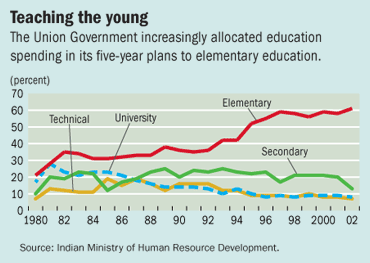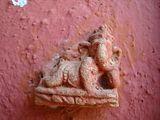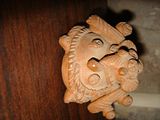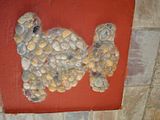What a fascinating paper. Imagine trying to use economic models to describe how Christianity moved from being a sect to a religion in the Roman Empire? You see, the author tries to explain and understand how a religion which started off being exclusive became open to all while on the other hand, became very doctrinarian and dictatorial about theology.
So being open as well as rigid at the same time, and how did that help in making the success of the religion in a relatively short period of time? Also, why did all the theological debates around 320AD break out at the same time across a wide variety of countries ranging from Egypt to Asia Minor? The answer can be found in the rational choice theory and the author applies it to the fight between paganism and Christianity.
You see, there was never a question of conversion in Greek or Roman times, you can switch from one deity to another, no problems, as long as you are ok with the Roman Religion (see the parallels with today's secular regimes?). So what did Christianity bring to the table, so to say? and I have to give a lengthy quote here because this is the crucial bit.
Modern historical research ([Harnack, 1908], [Nock, 1933], [Bardy, 1949], [Latourette, 1954] and [MacMullen, 1984]) has shown that the Christian message made converts because it promised individual spiritual salvation, made this promise credible by a unity of doctrine and organization founded on books embodying God's revelation to humankind, and backed this long-term promise with a short-term network of mutual protection and charity that paid tangible benefits to members. Christianity asked of its converts a complete renunciation of all other cults and “insurances” against misfortune and an uncompromising break with the religious traditions that had seemingly made the Roman state the greatest power to date. Against these heavy costs, however, were to be set the benefits of spiritual salvation and material within-group security. These benefits would become especially valuable when the old order appeared to be incapable of further guaranteeing the security and prosperity it had prided itself of for centuries, as happened in the third century.
Its when political dislocation occurred that Christianity took root as paganism was not able to satisfy the Roman's (and that's broadly defined as all members of the Roman empire, not just the inhabitants of current Rome or Italy) ecumenical and spiritual needs.
The author talks about how the Jews were quite heavily involved in proselytisation at that time and how the Christians had to break away from being just another Jewish cult or salvation group and they used the unique theological basis of Jesus, his life, his incarnation and re-incarnation to produce clear blue water between the Jewish and Pagan practices. But this, in the initial cases, was restricted to only few members, admission was very carefully controlled. This could therefore keep the doctrine clean and controlled within a controlled group of people.
But if it had to grow, it had to throw open the doors to outsiders and that would mean that the doctrines would be exposed to different interpretations and then it would again dribble away into sectarianism at worst or paganism at best. So, the compromise that was drawn, and perfectly economically based, was that they threw open the doors but closed the doors on doctrine such as the Council of Nicaea. I quote:
Finally, first imperial favor and subsidization of the church, then disestablishment and financial starving of pagan cults, and lastly the lifting of Christianity up to the rank of official religion of the state under Theodosius in the 390's, with the accompanying proscription of all non-Christian cults, solved the church's problem of adverse selection in recruitment. By disrupting the traditional public cults of the literate upper classes and thereby lowering their opportunity cost of joining in, the church was able to sustain its huge organizational growth.
The author then creates an economic model to predict this movement (see beginning equation and graph) which shows how Christianity moved from sect to an universal church modelling the relationships between benefits of being a pagan versus Christian, the membership conundrum and equilibrium points. He concludes that the rise of Christianity was not a historical accident or an inevitable occasion but a perfectly logical and economic choice made by Romans of that time.
But this does not explain how Christianity dribbled away in Europe nor how Secularism arose from the basic tenets of Christianity. Or how it is arising in USA. Or how its flourishing in Latin America, Africa and Asia? Or how it arose via missionaries in the European imperial times in countries as wide ranging as India to Madagascar?
Or why it did not take root in China, India, or Japan? In particular, why did it not take root in these 3 countries which will, arguably, have the most pagan religions of all (Hinduism, Buddhism, Shintoism and perhaps Animism as well?). Mind you, it is perfectly rational for conversion to happen in these countries. Whether it is because of fear, or economic benefits or peer pressure, generally, you can boil this idea of adopting another religion down to economic factors. As for why you continue in that religion is a different matter and for future research.
This paper offers an economic interpretation of Christianity's transformation from sect to universal religion in the Roman empire. It first points out paganism's apparent inability to provide individual security in times of distress, such as the third century C.E., as a reason for the increasing demand for monotheism. It then reviews Christianity's monotheistic competitors and points out the reasons why they lost out. Next, it addresses the Christian church's choice between exclusive membership and open access to all applicants on the day of its triumph and shows, by means of a cooperative model, that open access and universal membership were a superior policy if coupled with doctrinal radicalization. Finally, it analyzes the theological controversies of the fourth and fifth centuries by means of a Hotelling-type linear spatial model of doctrinal strictness ranging from paganism to Judaism, and traces the theological choices that were made back to the church's need to distance itself from its potential competitors.
































